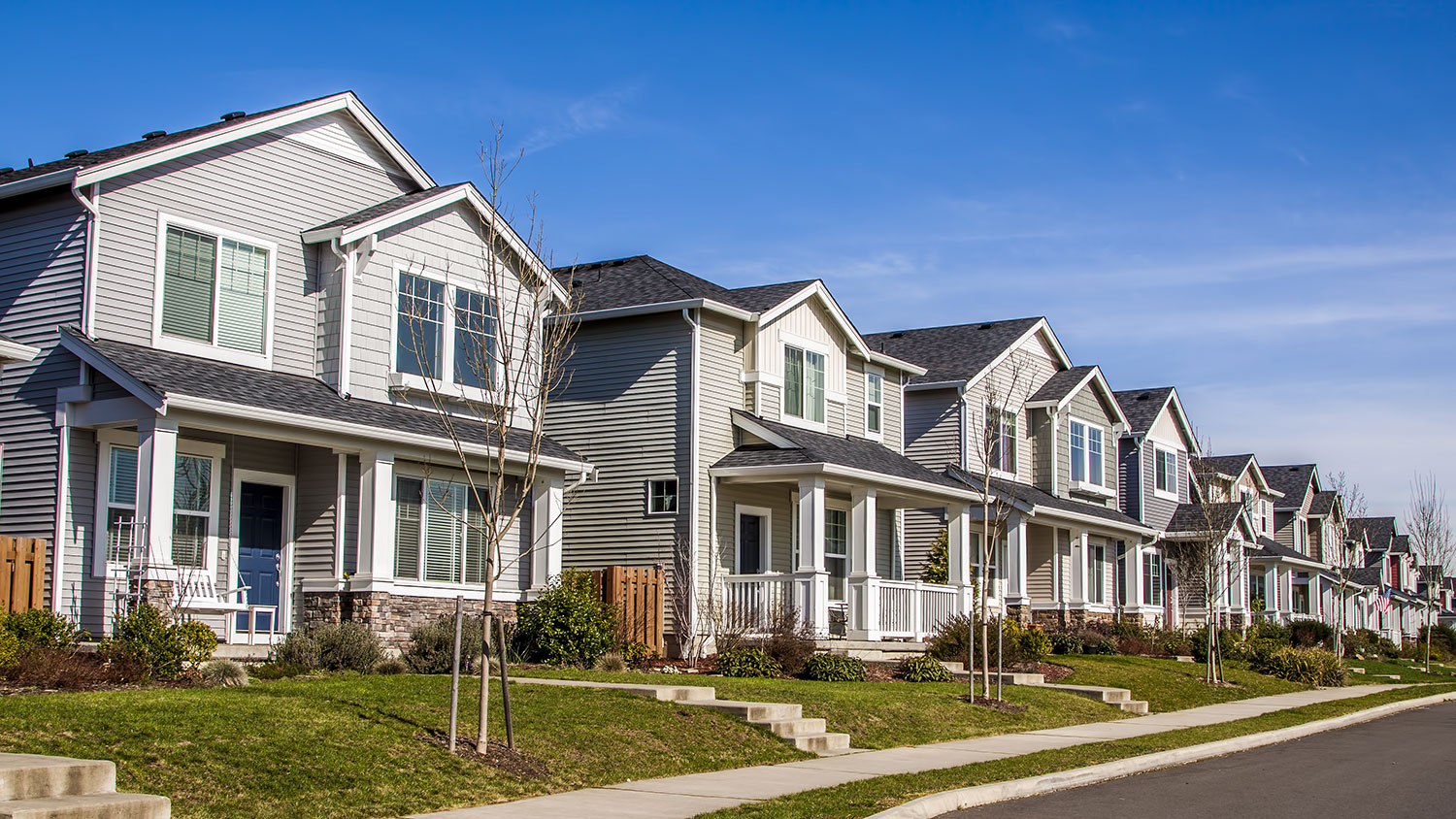Do “Missing Middle” Policies Increase Housing Affordability?
Poole College Professors Eileen Taylor and Steve Allen examine the complexities of denser housing development as a strategy for making housing more affordable in North Carolina's Triangle region.

Housing is a basic human necessity, and governments make numerous attempts to ensure that their citizens have access to it. Today there is a shortage of affordable housing in fast growing areas like the Triangle. Home prices have risen by 33% nationwide over the last three years, and prices in Raleigh have risen at a slightly higher rate than the national average. The average price of a home sold in Raleigh in March 2023 was $387,000, up from $287,000 in March 2020.
Although average housing prices in Raleigh are actually below the national average, affordable housing, defined by the federal government as “housing on which the occupant is paying no more than 30% of gross income for housing costs, including utilities.” remains a pressing issue. For example, to purchase a $400,000 home, a buyer needs a down payment of $80,000 ($14,000 for a first-time buyer) and must make average monthly mortgage payments of over $2,500. This is well beyond the reach of many households in our area, especially the 35% of Raleigh households with income below $50,000 for which affordability caps out at payments of $1,250 per month.
The root causes of the high and rising prices of housing are well established. On the demand side, people are relocating to lower-cost areas as more work is done remotely. Also, large firms continue to relocate jobs to this region, bringing more people who add to demand. On the supply side, the costs of both labor and materials are well above their pre-pandemic levels, which has slowed new home building.
The Complexities of “Missing Middle” Housing
So what can city officials do to make housing more affordable in this area? State and local governments have enacted or are considering enacting policies such as revising zoning that allows denser housing development. These policies are intended to incentivize builders to create “missing middle” housing, which according to Missing Middle Housing, is a range of house-scale buildings with multiple units — compatible in scale and form with detached single-family homes — located in a walkable neighborhood.
The argument is that by providing more units per acre of land, each unit would cost less, and thus be more affordable. For example, in a traditional single family zoned neighborhood, a builder can purchase a .25 acre lot for $220,000 and build one house. If zoning regulations allow for a duplex to be built on that same .25 acre lot, then theoretically, each house’s land cost would be $110,000 rather than $220,000. This theoretical lower cost would be passed on to the buyer, and one side of a duplex would be priced lower than the single family home.
Unfortunately, it’s a lot more complex than the example states.
First, the cost of land is a relatively small percentage of the build cost. Housing costs are determined by square footage and finish, and housing prices are based not only on cost, but on market demand, which remains strong. A house needs just enough land to meet the local set back and impervious surface rules, and extra property is worth very little when it comes to housing prices. Thus, the theoretical land cost savings doesn’t translate into a price savings.
Second, a .25 acre lot in a single-family zoned neighborhood may be worth $220,000, but if two homes can be built on the lot (in the form of a duplex), then the lot will likely increase in value, and a builder will pay more for it. In other words, by allowing denser housing, the land itself becomes worth more per acre. This effect works to raise the cost of land, and thus, the cost of building a house, rather than lower it.
Third, you may be thinking, yes, the cost of the whole parcel is more, but it can now be divided into two houses, making the cost per lot lower. Even if the cost per lot is lower, that savings will not be passed on to the buyer, as the builder will price the home according to market demand, as noted above. If there is additional profit due to a lower land cost per unit, that profit will go to the builder.
Last, builders, like all other for-profit businesses, are likely to choose the highest rate of return on their investment. There is more profit to be made on a new home that has more bells and whistles than there is on a low cost affordable home. Given limited land on which to build, a builder will maximize their return by building the largest and fanciest house they can, as long as someone is willing and able to purchase it.
Attempts to increase housing density have proven to be politically divisive. Those who own homes in areas subject to increased zoning density fear the loss of neighborhood amenities due to overcrowding and increased traffic. In Raleigh this had led to contentious sessions at the City Council and an impending lawsuit.
A recent study by the Urban Institute examined how changes in zoning density impacted rents and housing prices in over 1,000 cities from 2000 to 2019. They found that housing supply increased by only 1% in the cities that permitted more dense housing and that all of these new units were in the upper price ranges. They could not find any increase in the availability of middle or low income housing.
While there are other benefits and drawbacks of adopting missing middle housing policies, based on the research and the conditions in our area, increased density isn’t an immediate solution to creating affordable housing in the Triangle, where population is growing rapidly and housing supply is lagging.
Exploring Alternative Solutions
Is there a better way for local officials to make housing more affordable for middle- and lower-income households? Federal funding for building housing units or providing housing vouchers is extremely limited. Some cities are taking a fresh look at rent control, but the historical evidence of poor building maintenance and condominium conversions is not encouraging.
Some economists have suggested that cities take a look at the housing permitting process itself. How long does it take to get a building permit? How many parties have to sign off? How much are the fees that have to be paid along the way? All of these steps increase the cost of building a home or an apartment — costs that end up being passed on to the consumer. There also has been some analysis on the impact of building codes and whether they are unduly restrictive, but this is clearly an issue that requires deliberate consideration. Codes are intended to ensure safety and, increasingly, they are addressing energy efficiency. There is some statewide builder pushback on enacting energy efficiency codes, as evidenced by the recent reconsideration of them by the Building Code Council in May 2023.
The bottom line: housing affordability is going to continue to be an issue for some time, and local officials will face challenges making progress. The situation is complex, and individual cities and states may not be able to create effective solutions without a re-examination of federal housing policies and spending.
This post was originally published in Poole Thought Leadership.
- Categories:


